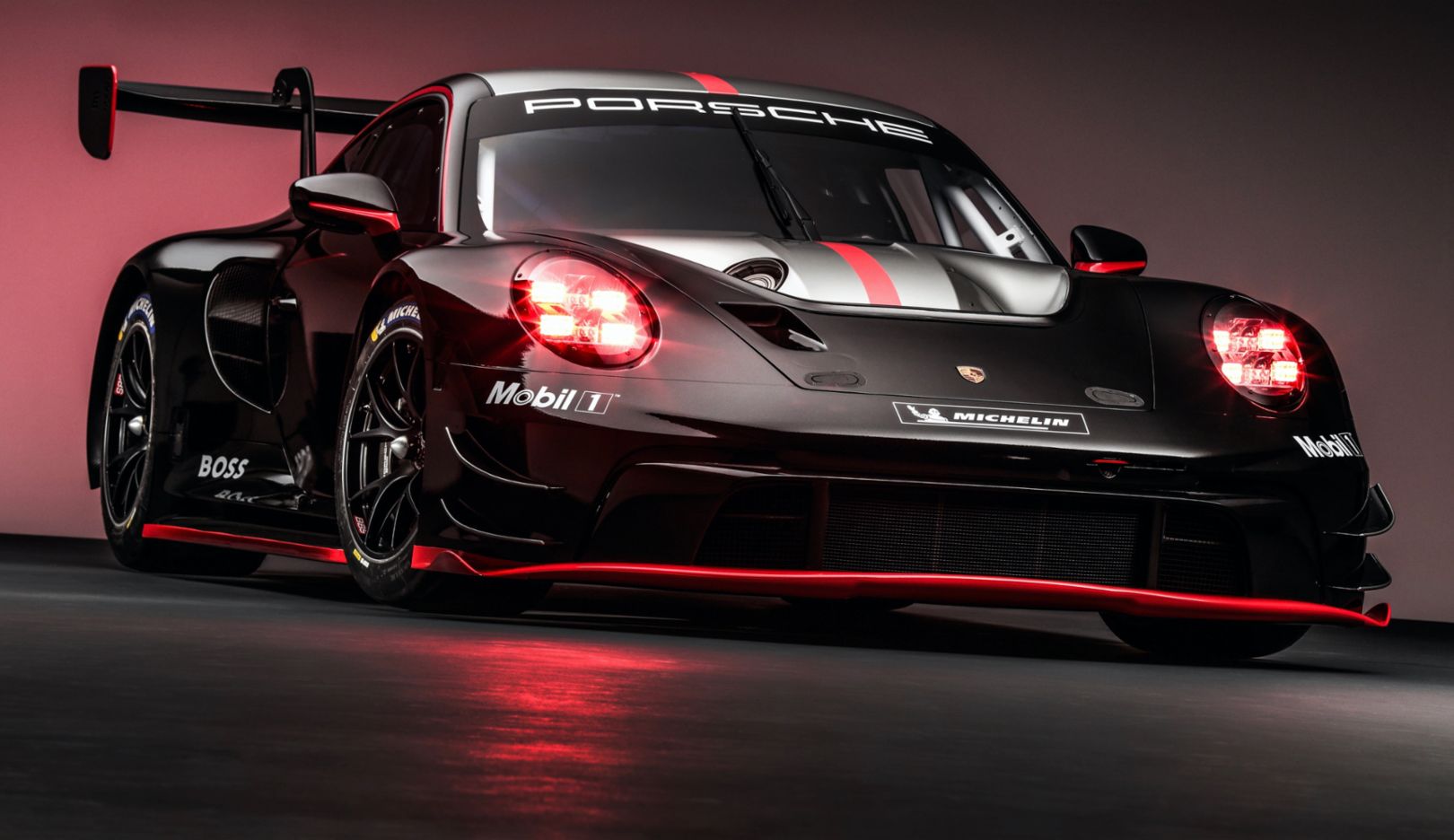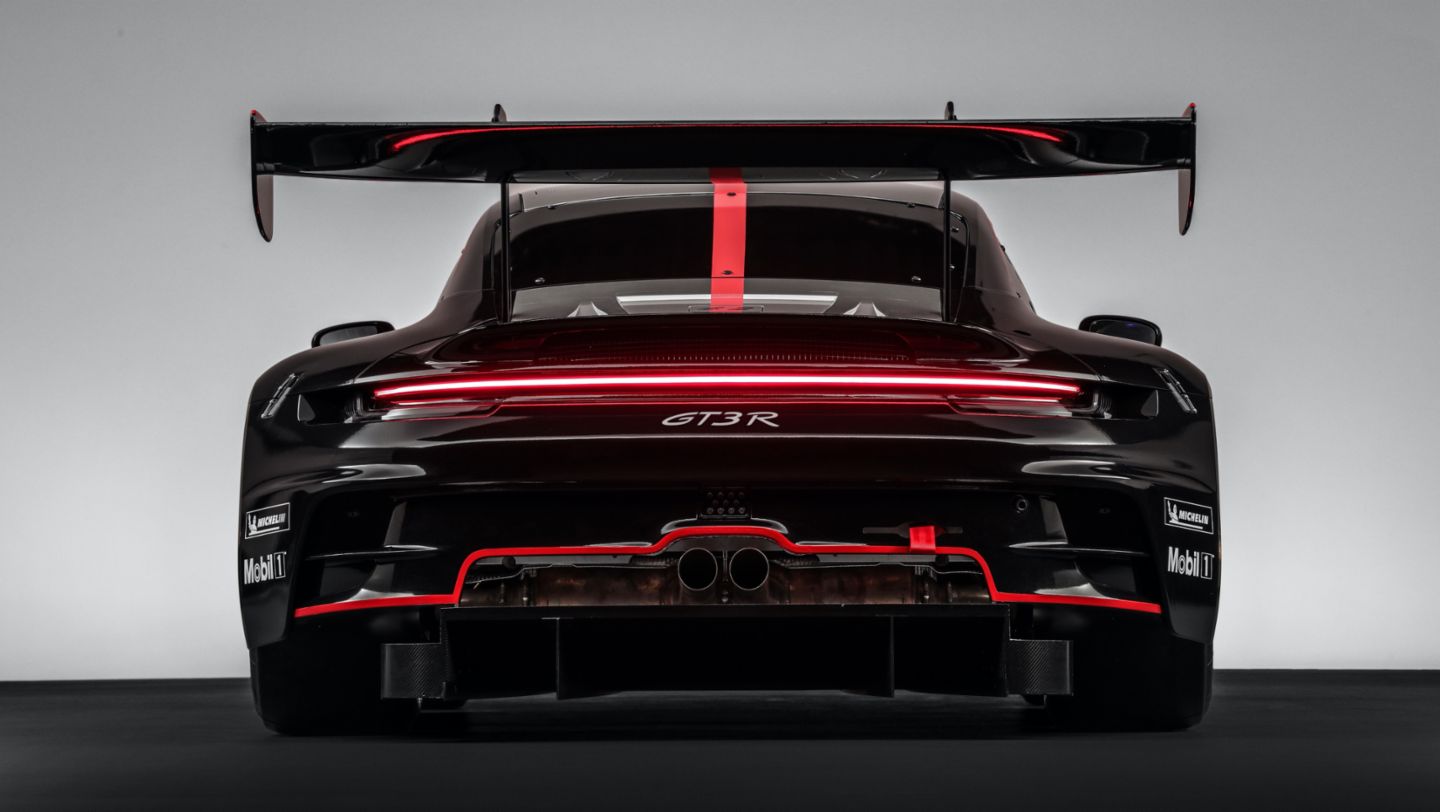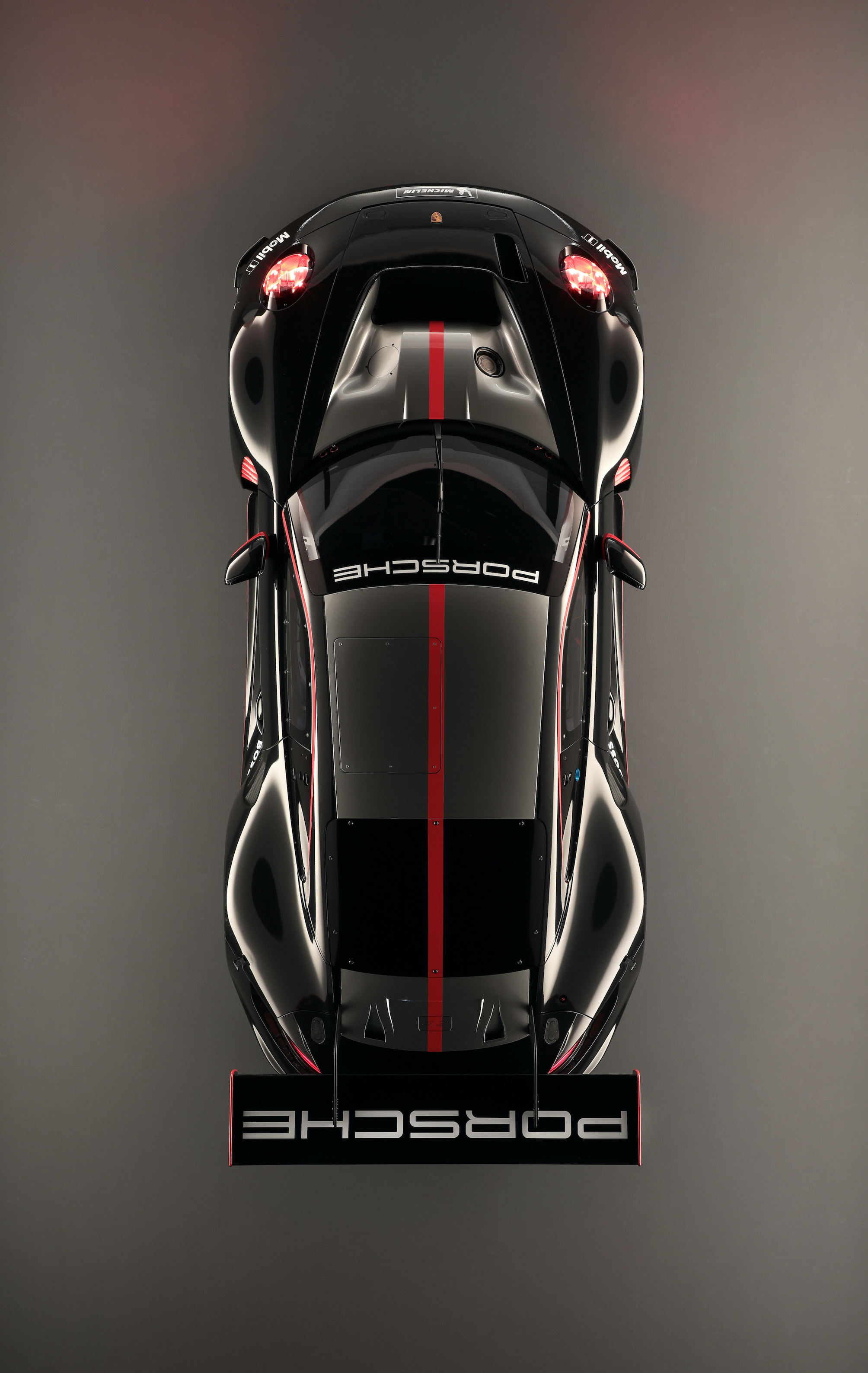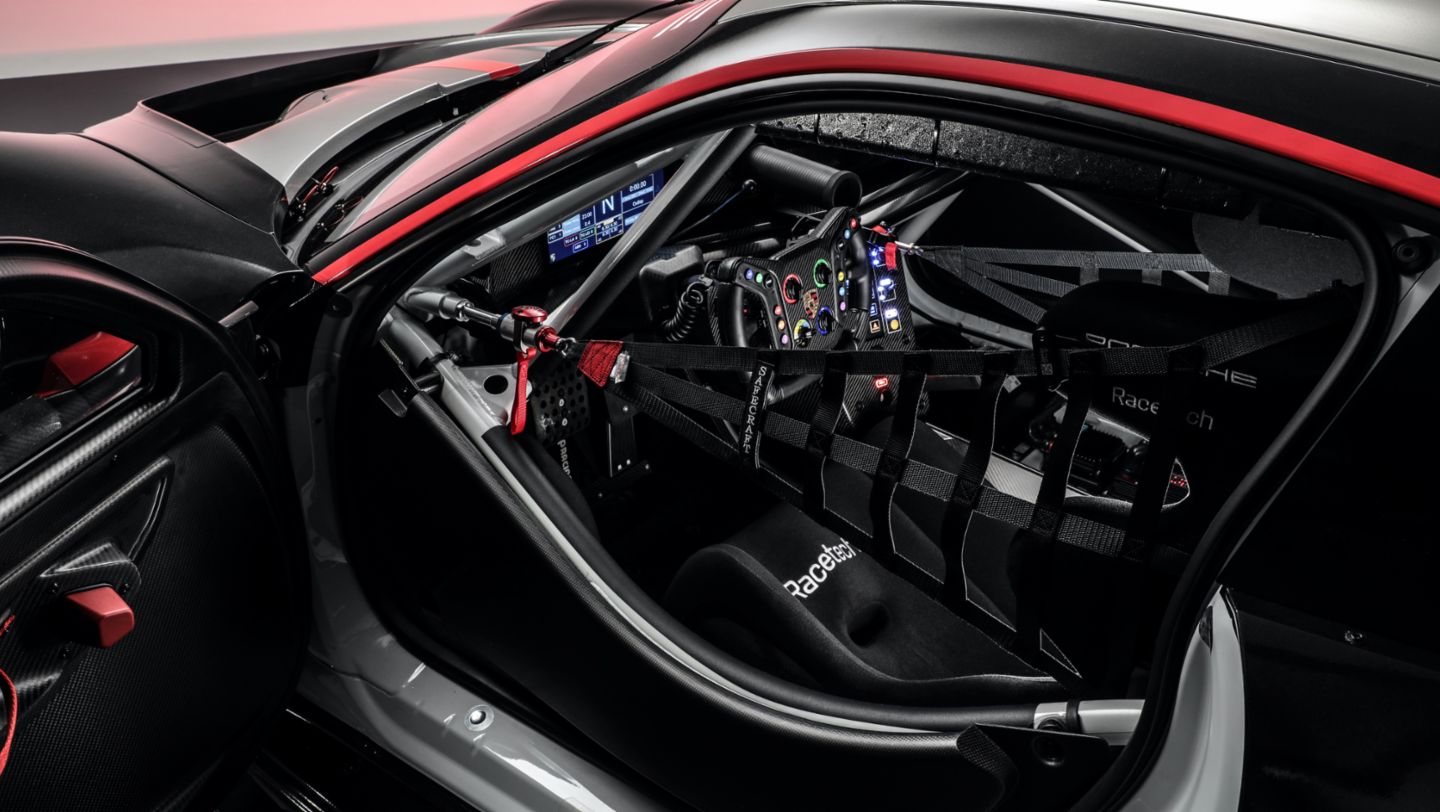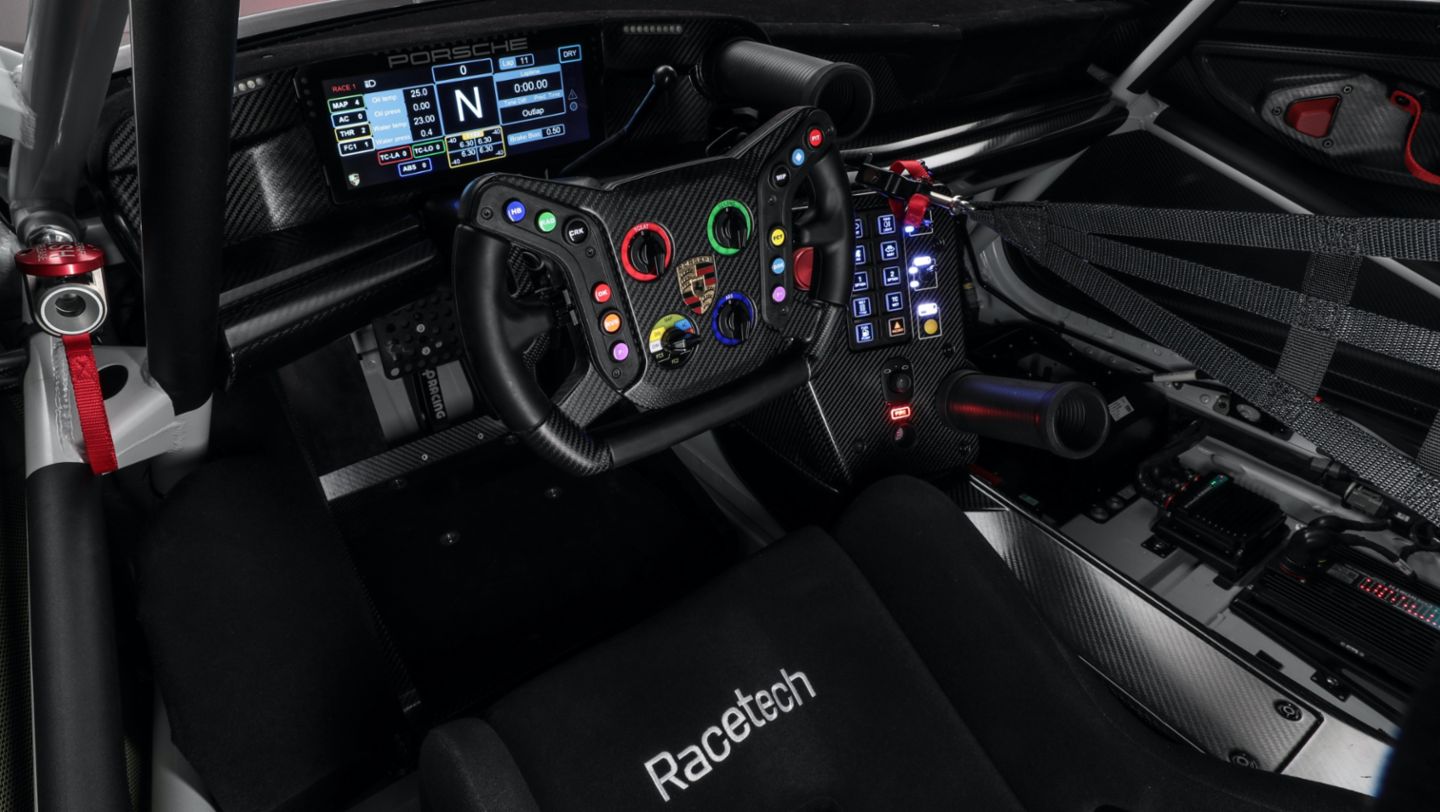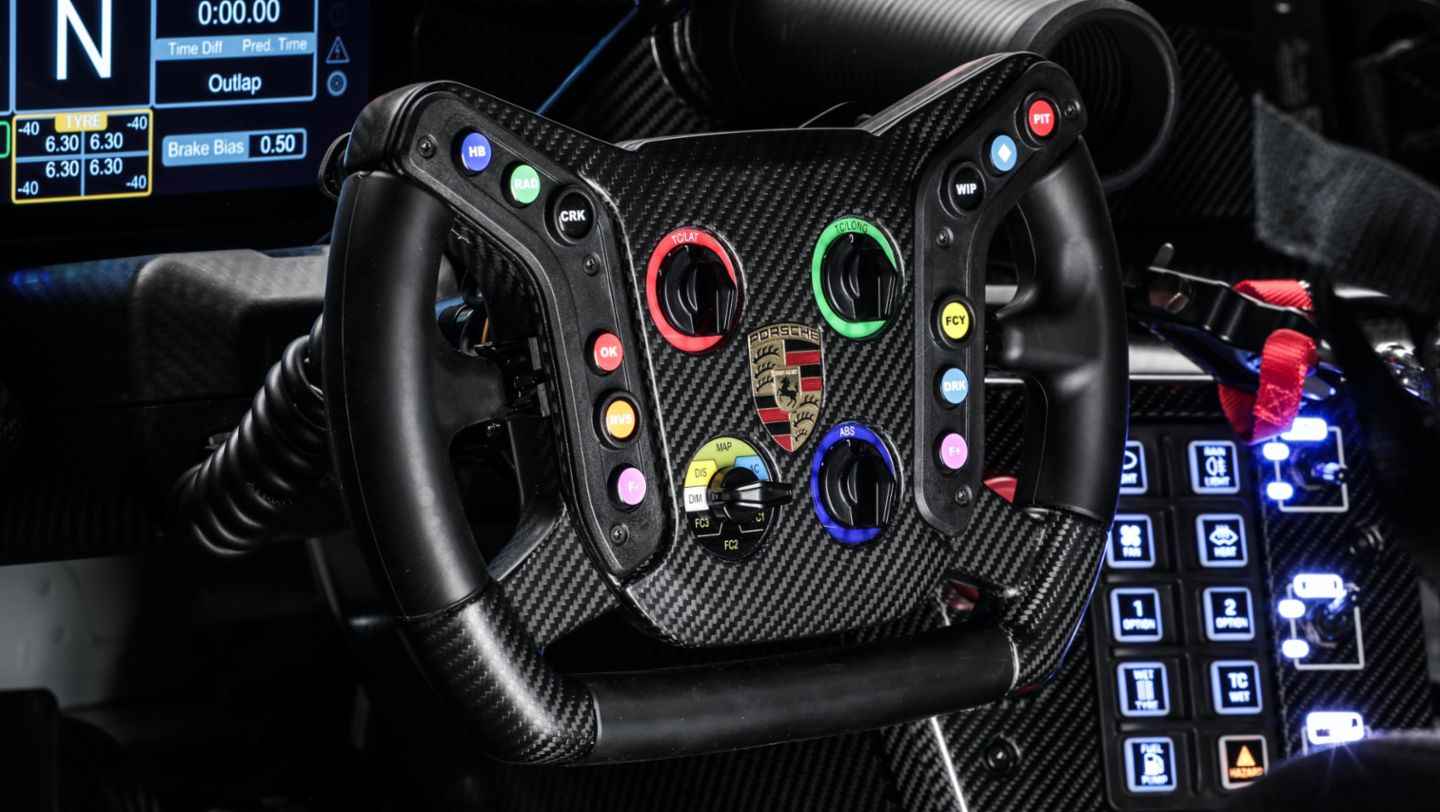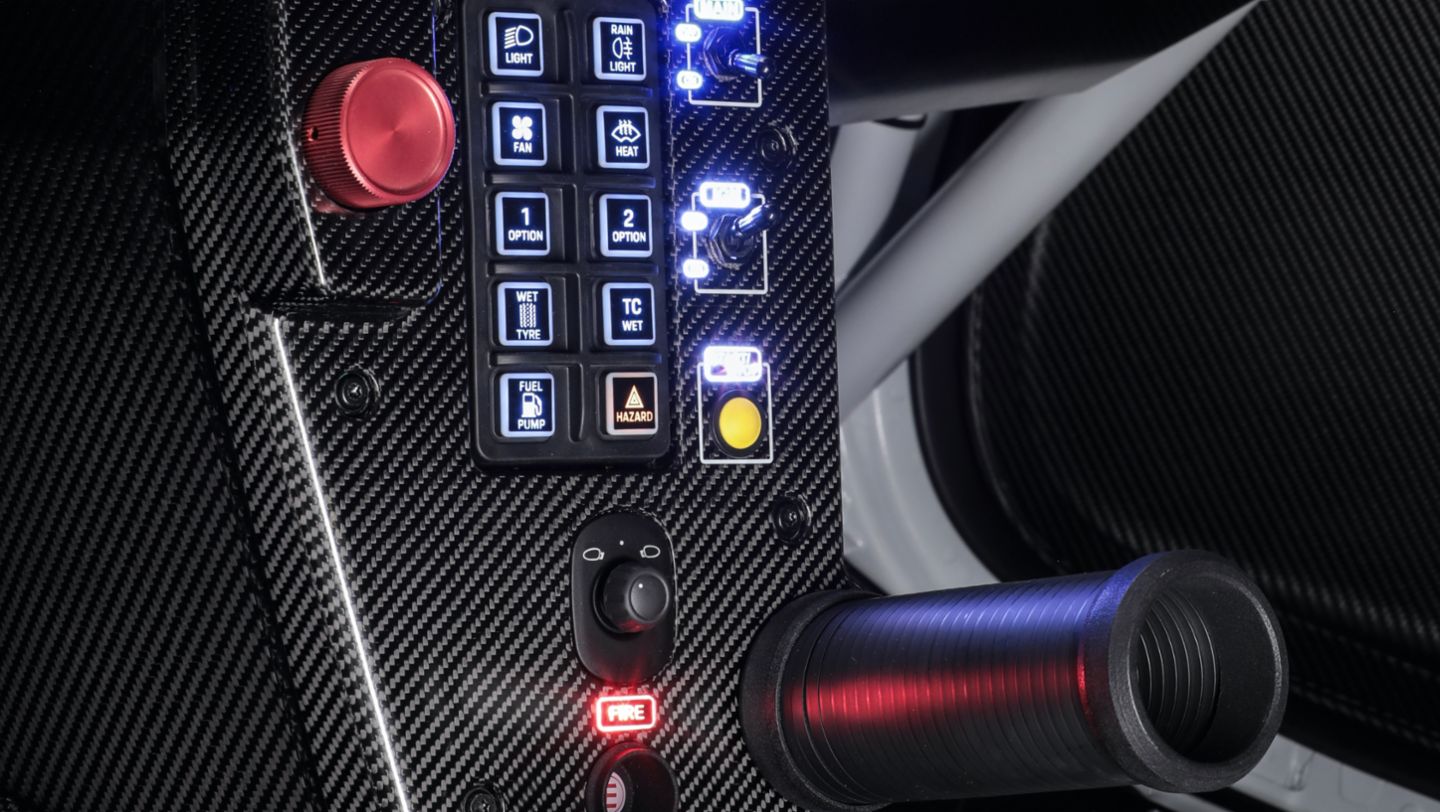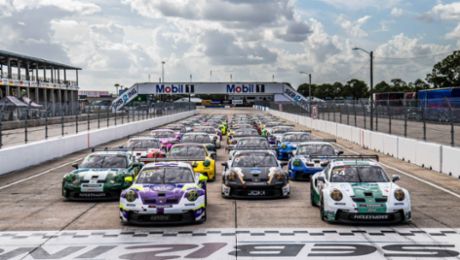With the latest generation of the 911 GT3 R, Porsche unveils a new customer racing car. The new challenger for GT3 series around the world is based on the current 992 generation of the iconic 911 platform and will be ready to race at the beginning of the 2023 season. Development began in 2019. Priority was given to further improving the drivability for drivers with various skillsets, as well as tapping larger performance reserves for different Balance of Performance (BoP) classifications. Another focus was on streamlining the handling of the race car for the teams and reducing the running costs. Porsche Motorsport now offers the new 911 GT3 R to North American customers at a price of $567,210 and optional extras. In the United States and Canada, the new racer is only available through Porsche Motorsport North America.
“In North America, GT3 is the top category of GT racing, as it soon will be around the world,” commented Volker Holzmeyer, president and CEO of Porsche Motorsport North America. “This made the new generation of the 911 GT3 R especially important to our market. Its development, which incorporates not only lessons learned from the previous generation GT3 R but also from the GT3 Cup one-make car as well as the 911 RSR, has made this car very appealing to our customer teams. Drivability is remarkably important to the wide range of drivers that we have competing here and that was a focus of the type 992 911 GT3 R. We have already had overwhelming interest in the car, and we are looking forward to seeing it turn its first wheel here soon.” After the GT3 class was announced as a professional category in the North American IMSA WeatherTech SportsCar Championship, the FIA World Endurance Championship (WEC) will follow suit. Beginning in 2024, GT3 racing cars such as the new 911 GT3 R will be eligible to take part in the 24 Hours of Le Mans for the first time.
“We hit the bull’s eye with the enormously successful predecessor. Accordingly, the bar for its successor is high,” emphasizes Sebastian Golz, 911 GT3 R Project Manager at Porsche Motorsport. “Our task was less about making the new 911 GT3 R even faster – the classification within performance windows set by the BoP quickly cancels out this advantage. For us, it was primarily about our customers being able to drive the racing car fast for longer. This requires durability and that’s why we focused predominantly on improved drivability. This is reflected in the new 4.2-liter engine’s broader usable rev band, more stable and constant aerodynamics and lower loads on the rear tires, which allow their potential to last longer.”
Engine based on the 911 generation 992
At the core of the new racing car is the near-standard engine based on the 992-generation 911 powerplant. Like in the previous model, it is a water-cooled flat-six engine with four-valve technology and direct fuel injection. The main new development is the displacement. Like the 911 RSR, the capacity of the new 911 GT3 R has increased by a five percent from 3,997 to 4,194 cc. This has boosted the engine’s peak output to around 565 HP (416 kW). More importantly, however, Porsche has optimized the torque and power curve across the entire rev range. Consequently, the new 4.2-liter six-cylinder is better suited for a wider range of driver experience.
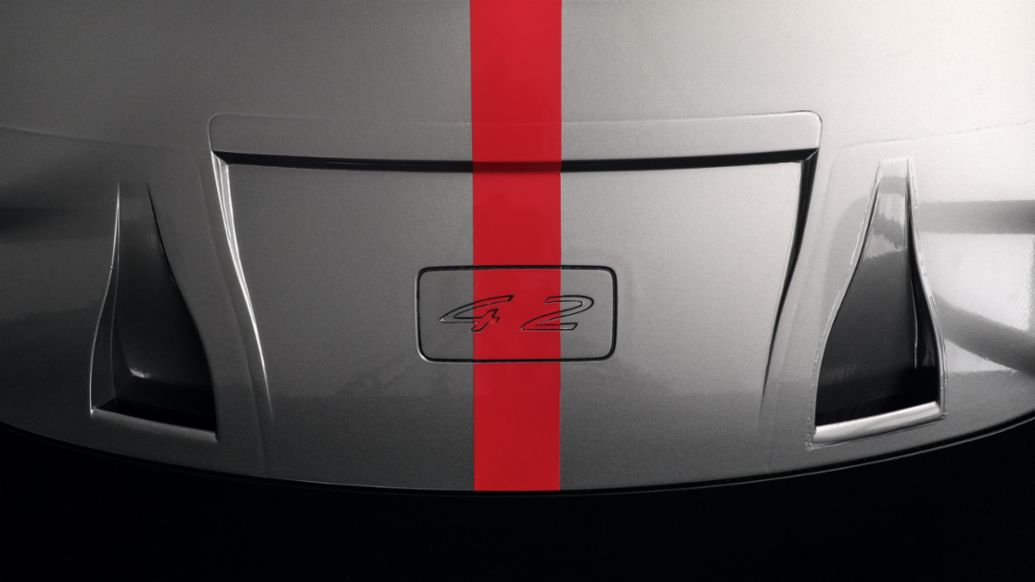
The high-revving six-cylinder continues without turbocharging and sits in the classic rear position, thus enhancing traction and braking. However, it has been tilted forward by 5.5 degrees, creating more space for the underbody diffuser. Auxiliary components such as the alternator and the air conditioning compressor were moved significantly forward and further down into a space in front of the engine and gearbox, which has a positive effect on the weight balance of the 911 GT3 R. The sequential six-speed contest-mesh gearbox is derived from the current 911 GT3 Cup race car. Shift paddles control an electronic shift drum actuator that enables particularly rapid and precise gear changes.
Suspension modified in many details
The new 911 GT3 R’s suspension – many details of which have been modified – supports driveability, allows more precise steering, ensures less wear on the rear tyres and reduces the time spent on set-up changes. For this, numerous components and technical solutions were taken from the 911 RSR. At the front axle, a state-of-the-art double wishbone layout controls the wheels. The rear axle sports a multi-link design. The KW shock absorbers were further improved and offer five adjustment settings. Set-up modifications are done with so-called shims. These plates enable precision adjustments without the need for the time-consuming re-alignment of the suspension afterward.
The optimized positioning of the central pivot points at the front axle frees space for the aerodynamic “race underfloor” concept. Like in the 911 RSR, this elevated underbody allows for a clean flow of air to the rear diffuser and reduces the pitch sensitivity of the racing car – i.e. a high rake under braking. The rear wheels have been moved further back, which extends the wheelbase from 2,459 to 2,507 millimeters (8.0 feet to 8.22 feet). This also reduces the load on the rear tires and improves the consistency of the tires’ performance over longer stints.
Racing brake callipers by the specialist AP
In addition to the aluminum monobloc racing brake calipers, the brake discs on the new 911 GT3 R are now also supplied by the specialist company AP. The internally vented and slotted front steel discs measure 390 mm (15.35 inches) in diameter and are activated by six pistons. Fitted at the rear are four-piston calipers and discs measuring 370 mm (14.56 inches). A sophisticated software application for the fifth-generation racing ABS reduces wear on the tires and brakes. Porsche's traction control system also received a further development.
The new 911 GT3 R is the second racing car from Porsche Motorsport to be based on the current type 992 911 after the 911 GT3 Cup. Its lightweight body with an intelligent aluminum-steel composite design draws on the production model, albeit with major modifications for use in the 911 GT3 R. Almost all body panels are made of lightweight carbon fiber, including the front and rear lids, doors, side panels, rear wing and roof. The wheel arches are made of aramid fibers.
Lightweight body with an aluminium-steel composite design
In a vehicle like the new 911 GT3 R, functionality is key. Nevertheless, Grant Larson from Style Porsche again succeeded in creating particularly stunning and harmonious shapes. They accentuate the heritage of the Porsche 911 and blend it with sophisticated efficiency. Most notably, this is reflected in the aerodynamics. The key points include an elevated underbody ahead of the front axle, for the first time in conjunction with a smooth undertray, and a rear diffuser. This combination improves downforce without a significant increase in drag. The rear wing now features a swan-neck mount. This ensures clean airflow under the wing and thus improves the aerodynamic efficiency of the component.
The interior of the new car continues the theme of efficiency and evolution. The seat has moved closer to the center of the car. This enabled Porsche to optimally adapt the more ergonomic seat position to the improved roll cage and the newly developed FIA side impact protection mandates. Like in the predecessor, the steering wheel and pedals can be adjusted longitudinally to suit the driver while maintaining a fixed seat mount. Porsche specialists took another close look at the six-point harness. The tongues now slide even faster into the clasp via special ramps – saving about a second during pit stops for driver changes. The steering wheel design also received further upgrades on the previous model. It incorporates elements that have proven themselves in the latest generation 911 GT3 Cup and 911 RSR race cars. The 10.3-inch display, for example, comes from the successful one-make cup racer, with the multi-switch concept adopted from the Le Mans class winner.
The high-performance LED headlights on the 911 GT3 R rely on collimator technology, which Porsche developed for the new IMSA GTP and WEC LMDh 963 prototype, among others. This device works like a magnifying glass, only in reverse. It illuminates a particularly large area of the race track and is a significant improvement on the previous model, which had been regarded as the class leader.
Detailed information on the new 911 GT3 R is available on the Porsche website at this link.
Technical data Porsche 911 GT3 R (992) model year 2023
Concept • Single-seater customer race car; homologated for the FIA GTE category; homologation basis: Porsche 911 GT3 (992 series).
Weight/dimensions
• Base weight: ca. 1,250 kg (depending of BoP classification); wheelbase: 2,507 mm.
• Length: 4,619 mm; width: 2,039 mm (front axle) / 2,050 mm (rear axle).
Engine
• Water-cooled six-cylinder boxer, rear-mounted; capacity 4,194 cc, stroke 81.5 mm, bore 104.5 mm; max rpm 9,250/min; power: ca. 416 kW (565 PS); four-valve technology; single throttle butterfly system; direct fuel injection; engine control unit Bosch MS 6.6; dry sump lubrication with oil-water heat exchanger; single mass flywheel; race exhaust system with twin tailpipes and DMSB certified catalytic converter; fuel quality: Superplus unleaded to E20 (min. 98 octane).
Transmission
• Porsche six-speed sequential constant-mesh gearbox; shift paddles on the steering wheel with electronic shift actuator; mechanical limited slip differential with adjustable preload system unit; three-plate carbon race clutch.
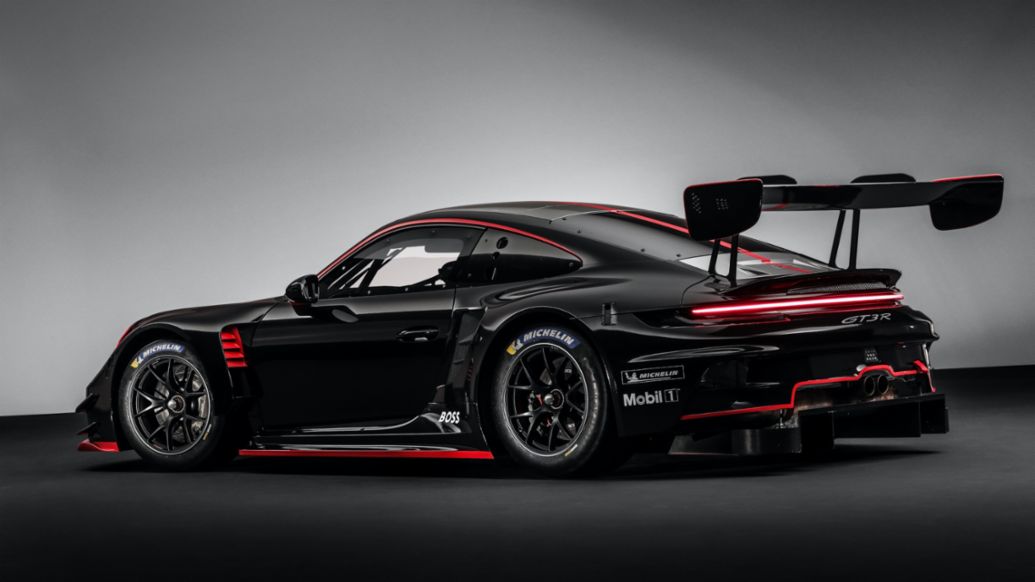
Body
• Lightweight body featuring intelligent aluminium-steel composite design; mounting points for lifting device, removable rescue hatch in the roof; welded-in roll cage; approved for co-driver use on circuits; six-bolt carbon racing seat pursuant to FIA 8862-2009; six-point safety harness for use with HANS®; longitudinally adjustable pedal assembly and adjustable steering column with steering angle senor; front cover with integrated quick-release fasteners, cooler exit-air duct and central air intake for cockpit ventilation; widened front bumper with spoiler lip; fenders with extensions; rear trim with integrated rain light in accordance with FIA; doors, carbon-fibre rear lid and rear wing; rear wing with “swan neck” mounts; fully polycarbonate glazing with hard coating; heated windscreen; four-post air jack system; valve mounting points on either side; 117-litre FT3 fuel cell in front of the car.
• Carbon-fibre interior trim, multifunctional carbon-fibre steering wheel with quick release coupling, shift paddles and illuminated push buttons; ergonomic digital touch panel with multi-color backlighting; safety nets (center and driver’s side) in accordance with latest FIA safety regulations; integrated CFK side impact protection; drivers’ seat with seat ventilation; fire extinguishing system with electronic release unit.
Suspension
• Forged aluminium control arms and top mounts, stiffness optimised; highy-duty spherical bearings with dust protection; wheel hubs with central locking; five-way adjustable racing shock absorbers, motorsport-specific valve design and blow-off function; suspension adjustment via shims; sword-type anti-roll bars adjustable on both sides; spring travel potentiometer; tyre pressure monitoring system.
Front axle:
• Double wishbone front axle, adjustable ride height, camber and toe.
• Electro-hydraulic power steering.
• Single-piece alloy rims, 12.5J x 18, tyre size 30/68-18.
Rear axle:
• Multilink rear suspension, adjustable ride height, camber and toe.
• Racing driveshaft with tripod flanges.
• Single-piece alloy rims, 13.5J x 18, tyre size 31/71-18.
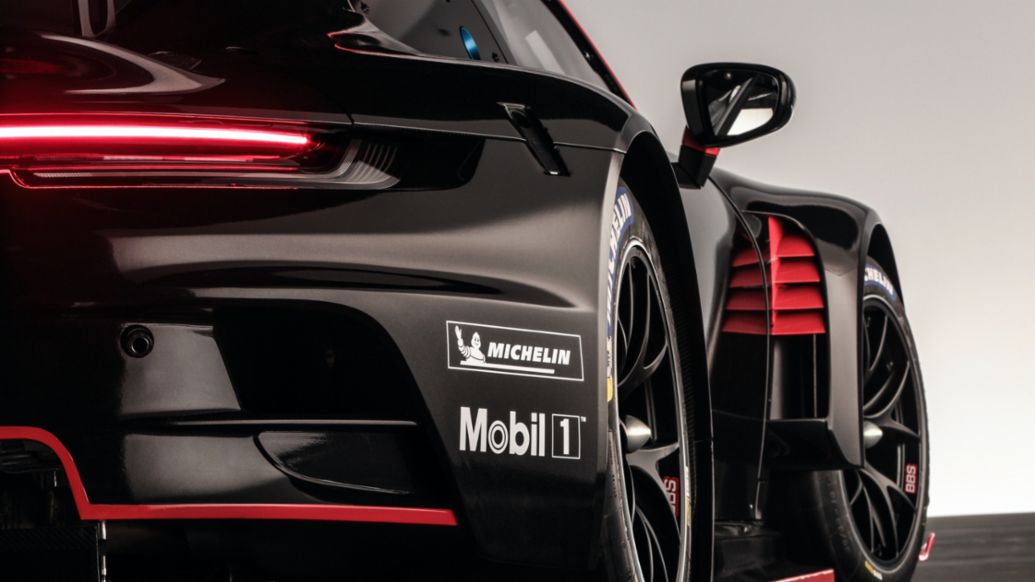
Brakes
• Two independent brake circuits incorporating front and rear axle brake pressure sensors, driver adjustable brake-force distribution via brake balance system; racing brake pads; optimised brake ducting; brake temperature sensors; ergonomic brake pedal positioning for left and right foot braking.
• Generation 5 racing ABS from Bosch
• Front axle: Six-piston aluminum monobloc racing brake callipers ‘anti knock-back’ piston springs; internally vented multi-piece 390 mm x 35.7 mm steel brake discs; aluminium brake disc chamber.
• Rear axle: Four-piston aluminum monobloc racing brake callipers with ‘anti knock-back’ piston springs; internally ventilated multi-piece 370 mm x 32.1 mm steel brake discs; aluminium brake disc chamber.
Electrical system
• 992 EE Motorsport architecture; new easier-to-use Porsche toolset with more streamlined handling; latest generation Cosworth electronic components; Porsche Logger Unit; Porsche power box; 10.3-inch Porsche colour display with integrated RLU, data recording via USA stick; leak-proof LiFePo4 battery 12V, 40 Ah in the passenger footwell; 210 A alternator; digital touch panel with multi-colour backlighting; single-arm windscreen wiper with direct drive (intermittent and continuous).
• LED headlights with integrated auxiliary lights; LED taillights plus rain light. Attachments for Accident Data Recorder (ADR).
Info
Porsche Motorsport now offers the new 911 GT3 R to North American customers at a price of $567,210 and optional extras. In the United States and Canada, the new racer is only available through Porsche Motorsport North America.
